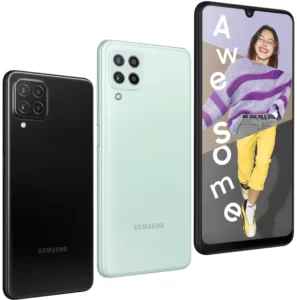Greetings, fellow gamers! We are going to dive into the world of handheld consoles with a comprehensive review of the highly anticipated Nintendo Switch OLED. Having had my eye on it for quite some time, I finally decided to take the plunge and make the purchase, opting for a place with good availability as the official release date still seemed elusive. And… we are talking about Steam Deck 64GB, not Switch. However, my plans took a sudden turn when the seller abruptly cancelled, citing stock depletion. Little did I know; this would lead me to the world of the Nintendo Switch OLED.
Unboxing: An Experience Beyond Expectations
The unboxing experience was nothing short of a delight. The package came loaded with extras, making it feel like a gamer’s dream come true. Aside from the main event— the tablet/console, the box included a pair of joy-cons with pre-installed thumb grips, an AC adapter, an HDMI cable, a joy-con grip, and joy-con straps. But that’s not all; to sweeten the deal, there was tempered glass for screen protection and a sleek travel case for gaming on the go. The inclusion of these accessories showcased the seller’s commitment to providing a wholesome and enjoyable gaming experience right out of the box rather than from Nintendo itself.
Physical Overview: A Closer Look at the Console
Let’s delve into the physical attributes of the Nintendo Switch OLED. The console boasts a sleek design with a 7″ OLED screen, a noticeable upgrade from the 6.2″ screen of its predecessor. The screen is flanked by stereo speakers, offering an immersive audio experience. A closer inspection reveals the power and volume buttons, an audio jack, and a game card slot. The joy-cons attach seamlessly to the rails on the sides, ensuring a secure fit. The inclusion of a USB Type C connector and a microSD card slot demonstrates Nintendo’s forward-thinking approach, allowing users to expand storage and stay connected effortlessly.
The dock, an essential component for the TV mode experience, features USB and HDMI ports, along with a LAN port for wired connectivity. This thoughtful design ensures a smooth transition between handheld and TV modes, catering to diverse gaming preferences.
Joy-Cons: Button Magic and Ergonomics
The joy-cons, Nintendo’s innovative detachable controllers, offer more than meets the eye. Beyond their compact size, they house a capture button on the left for screenshots and video recording. The right joy-con, meanwhile, features a home button for quick navigation. The ergonomic design ensures comfort during extended gaming sessions, and the inclusion of joy-con straps adds an extra layer of security during more active gameplay.
Software Setup: Navigating the Nintendo Ecosystem
Setting up the Nintendo Switch OLED is a breeze, albeit with a few quirks. Connecting to Wi-Fi, setting the time and date, and dealing with manual date-time entry were standard procedures. While these processes were relatively straightforward, a slight inconvenience arose from the lack of automatic date-time synchronisation after connecting from the Wi-Fi. Nevertheless, once connected, a mandatory software update ensured the system was up to date.
Performance and Gaming Session: Putting the Switch to the Test
Now, let’s talk about performance. While I won’t delve into technicalities without direct metrics, I did put the Nintendo Switch OLED through its paces with a variety of games. Xenoblade Chronicles 3, a graphically demanding title, showcased the system’s capabilities, handling the intricate details of the game environment with finesse. Asphalt 9 Legends and Sky Children of Light, both available on Android/iOS, ran smoothly, emphasising the versatility of the Switch in accommodating diverse gaming experiences.
An exciting prospect on the horizon is the imminent release of Genshin Impact on the Switch. While its arrival could shed light on the system’s performance compared to other platforms, it also prompts questions about the challenges of adapting a visually intensive game to a handheld console. But it probably won’t ever be released.
Addressing a common concern among gamers, the Nintendo Switch OLED does experience a rise in temperature, especially in handheld mode. The right side tends to be warmer, which, interestingly, doesn’t interfere with hand placement, thanks to the proximity of the hands to the joy-cons. When switched to TV mode, the temperature increases further, accompanied by the subtle hum of the fan. Notably, the fan only activates its high spinning when necessary, such as during TV mode, ensuring efficient cooling without unnecessary noise.
Let’s Wrap It Up
In conclusion, the Nintendo Switch OLED stands as a worthy addition to the handheld gaming landscape. Despite a few minor wobbles during the docking process, it offers a robust gaming experience with its strong battery life, exclusive game library, and the enhanced visual appeal of the OLED screen. Even in 2023, as we approach the end of its lifecycle, the Nintendo Switch OLED remains a good buy. With the anticipated release of the next-gen Switch in 2024, this might be the perfect time to grab the OLED variant before the coming sunset.
Okay good people, that’s a wrap on my exploration of the Nintendo Switch OLED. Thank you for joining me on this gaming journey, and until next time, happy gaming!
Bonus
I also did a video of this topic on YouTube. But be aware that the language spoken is in Indonesian.



